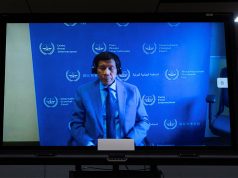The Senate of the Philippines has finally unveiled the chosen design for its new building set to rise at Fort Bonifacio in Taguig by 2021. Amid the senate’s optimism, some question whether the new abode is what the country needs right now.
A new home for the upper house
The plan to move the Senate building to a new site in Taguig was approved in November 2017, following a 14-2 vote from the senators present.
Sen. Panfilo Lacson, chair of the Senate’s committee on accounts earlier spoke of wanting an iconic new building for the upper house of congress.
He shared his distaste with the experience of having to host foreign guests in the complex in Pasay the upper chamber shares with the Government Services Insurance System.
The Senate pays rent of at least P110 million annually for use of the building.
The winner of the design call launched by the Senate was AECOM Philippines, an international firm with clients in at least 150 countries.
Pleased as the members of the upper house may be, not everyone has celebrated the move.
Former Commission on Elections commissioner Gregorio Larrazabal questioned why the Senate chose Taguig to be its new site despite traffic problems in the area, on account of Bonifacio Global City, one of the most crowded business districts in the metropolis.
I think the Senate will have big issues in traffic management once the building is built in BGC. That area is a traffic mess.
— Gregorio Larrazabal ?? (@GoyYLarrazabal) May 28, 2018
For others, the money to be put aside could have been used for something that would serve the public.
It's not as if the new Senate building will look as good as the render ? They could have allocated the budget for that unnecessary building to new classrooms instead. Now THAT is what this country needs.
— Kel (@kelanocyte) May 28, 2018
The Fort versus Antipolo
The other option offered to the Senate was a 25-hectare piece of land in Antipolo City.
Antipolo City Mayor Casimiro Ynares offered the property in June 2017 following the Senate’s plans to migrate.
The projected cost of the Antipolo site would have been P2.292 billion while projected cost for the Taguig site was P5 billion.
Some have questioned why the Taguig property was chosen over the Antipolo property.
Lacson, however, earlier explained that the Antipolo property was underdeveloped.
In September 2017, Resolution 293 filed by Sen. Sherwin Gatchalian choosing the 18,320 square meter parcel of land in Navy Village, Taguig as the site of the new Senate building.
The decision came following a survey conducted with officials and employees of the Senate.
I'm not against new buildings for the Senate and the Supreme Court… but as prominent government institutions they should have led the transfer to the New Clark City where a government center is being put up. Instead of perpetuating Manila's congestion. https://t.co/FwqIGmDxQ1
— kevintotsky (@kevinsoon1) May 28, 2018
Other movements
Some have also brought up another alternative to the already bustling Fort Bonifacio.
The 9,450-hectare New Clark City, slated to rise in the Clark Special Economic Zone in Tarlac, has been billed as Luzon’s new metropolis and center of commerce.
It is envisioned as strategically accessible to the various key projects of the Build, Build, Build program expected to be completed within the next few years such as the Clark Airport expansion and the new Luzon railway projects.
A government district is envisioned to rise in the development.
At least six government agencies are set to move to New Clark City upon its completion, in line with plans to consolidate government resilience outside of the capital in the event of natural disaster.
Ironically, AECOM was chosen in 2015 to provide the master development plan for Clark Green City, the first inception of the New Clark City.









